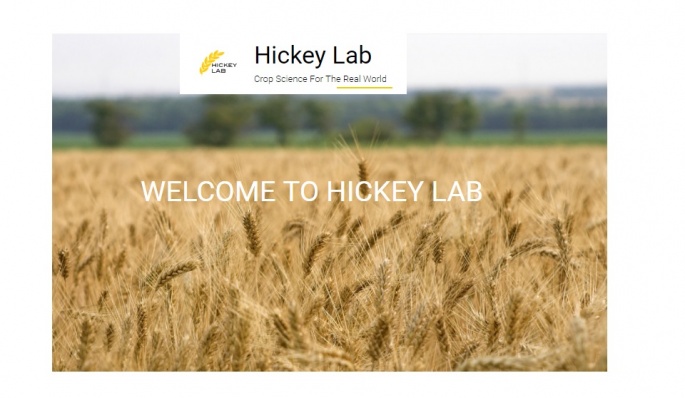Hickey Lab : Crop Science For The Real World


The Hickey lab conducts discovery and applies research on Australia’s most important cereal crops – wheat and barley. The Hickey lab’s research is focused on key abiotic and biotic factors that limit grain production, as well as development of novel breeding tools and methodologies.
_____________________________________________________________________________________________________
“The human population is expected to reach nine billion by the year 2050 and will strain global resources. The efficiency of crop breeding must improve if we are to develop resilient varieties that maintain productivity and meet future demands” (The Hickey lab challenge) .
“Modern breeding and a switch to monoculture cropping has greatly improved yield and quality, but the lack of genetic variation has caused crops to become more vulnerable to new diseases and climate change. Diversity in ancient strains could hold the key to the future”, - Queensland Alliance for Agriculture and Food Innovation’s Dr Lee Hickey.
Scientists from the University of Queensland are undertaking world-first research into ancient wheats to ensure the crop’s future. The Hickey Lab research group is situated within the Queensland Alliance for Agriculture and Food Innovation at the University of Queensland, Brisbane, Australia.
The Hickey research team develops novel pre-breeding germplasm with adapted genetic backgrounds, along with validated marker-trait associations. The Hickey lab’s genetic studies improve understanding of gene effects, trait interactions, and interactions with specific environments. Such information and tools better equip breeders to assemble improved cultivars for farmers.
The Hickey Lab germplasm pipeline takes advantage of large nested-association mapping (NAM) populations, speed breeding technology, high-throughput phenotyping methods, and genotyping-by-sequencing (GBS) marker platforms.
Currently the Hickey Lab is conducting the following projects:
| A new method for rapid generation advance, called ‘speed breeding’ has considerable advantages for spring wheat because it provides increased recombination during line development and enables selection in early generations for some traits. The Hickey lab exploits technology to facilitate crossing and development of improved F4-derived lines within just 12 month… |
Yield, grain quality, tolerance to abiotic stress and disease resistance are important, yet challenging targets for breeders aiming to improve wheat productivity. To unravel the genetics of these complex traits, the Hickey Lab has developed a series of inter-related NAM populations. Three NAM populations were developed by nesting 12 diverse founders within three common parents adapted to the western, southern and northern cropping regions of Australia... | |
| Crops are often affected by terminal heat and drought stress, and an array foliar pathogens including; leaf rust, spot blotch, spot form of net blotch, net form of net blotch and powdery mildew. The Hickey Lab has developed the final “bNAM” public resource comprises 1,550 inbred lines made up of 33 reference × founder families. Analysis of this resource will deliver the genetic materials and molecular tools required to effectively pyramid these traits to develop robust cultivars… |
Historical germplasm, such as landraces represents a potential source of valuable genetic variation. This material is stored in gene banks, and represents over 850,000 viable wheat samples in 229 independent collections preserved around the world. In 2014, Dr Hickey assembled a diversity panel of 300 wheat accessions including; landraces, cultivars and breeding lines, originally sourced from the N.I. Vavilov Institute of Plant Genetic Resources, Russia (244 accessions) and the A. E. Watkins Landrace Wheat Collection, John Innes Institute, England (56 accessions)... The diversity panel was genotyped with 56,000 DArTseq DNA markers. The Hickey Lab research, ‘Into the vault of the Vavilov wheats: old diversity for new alleles’, is published in Genetic Resources and Crop Evolution. |
Please contact the Hickey Lab with any questions or comments you may have.
Source: Hickey Lab

